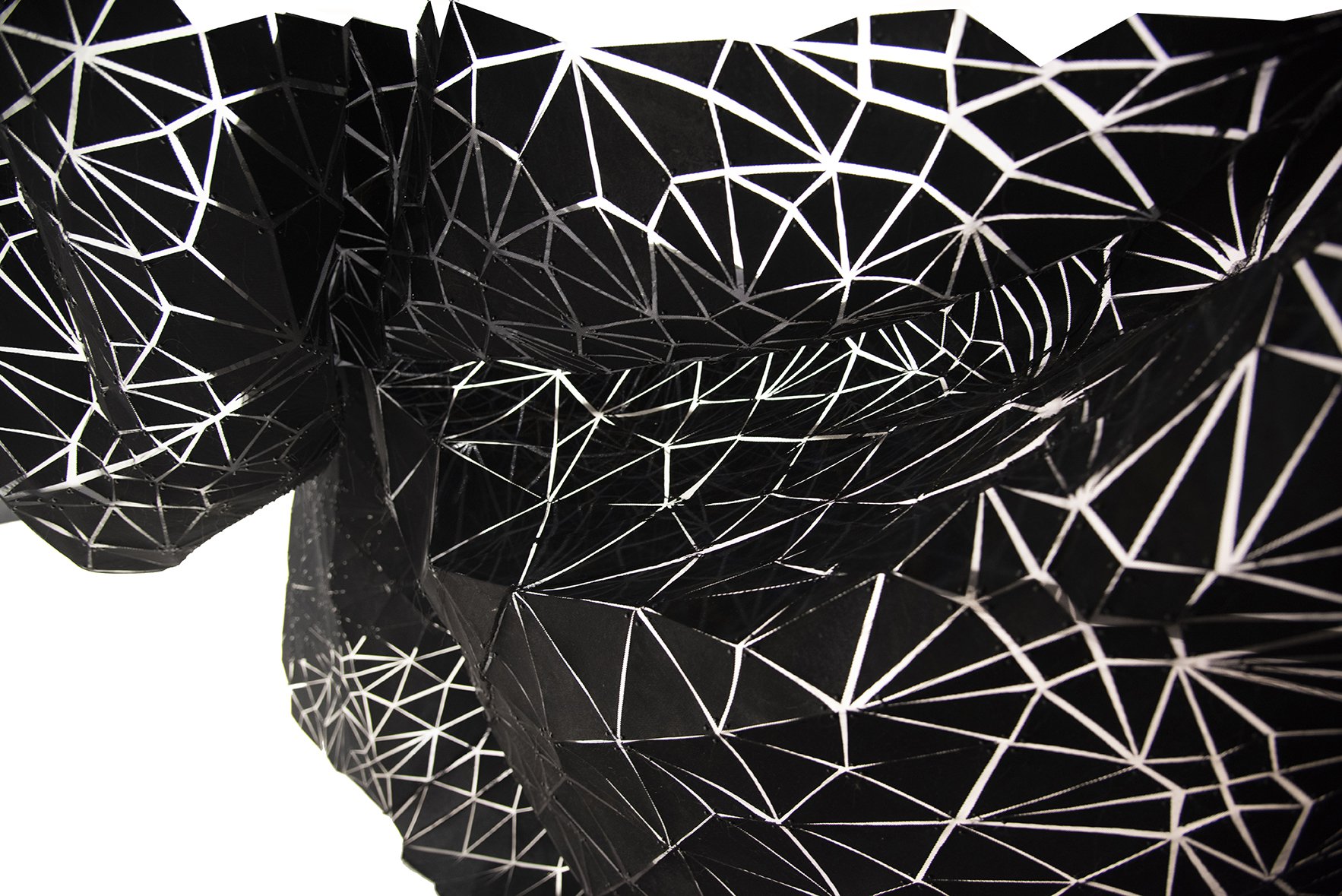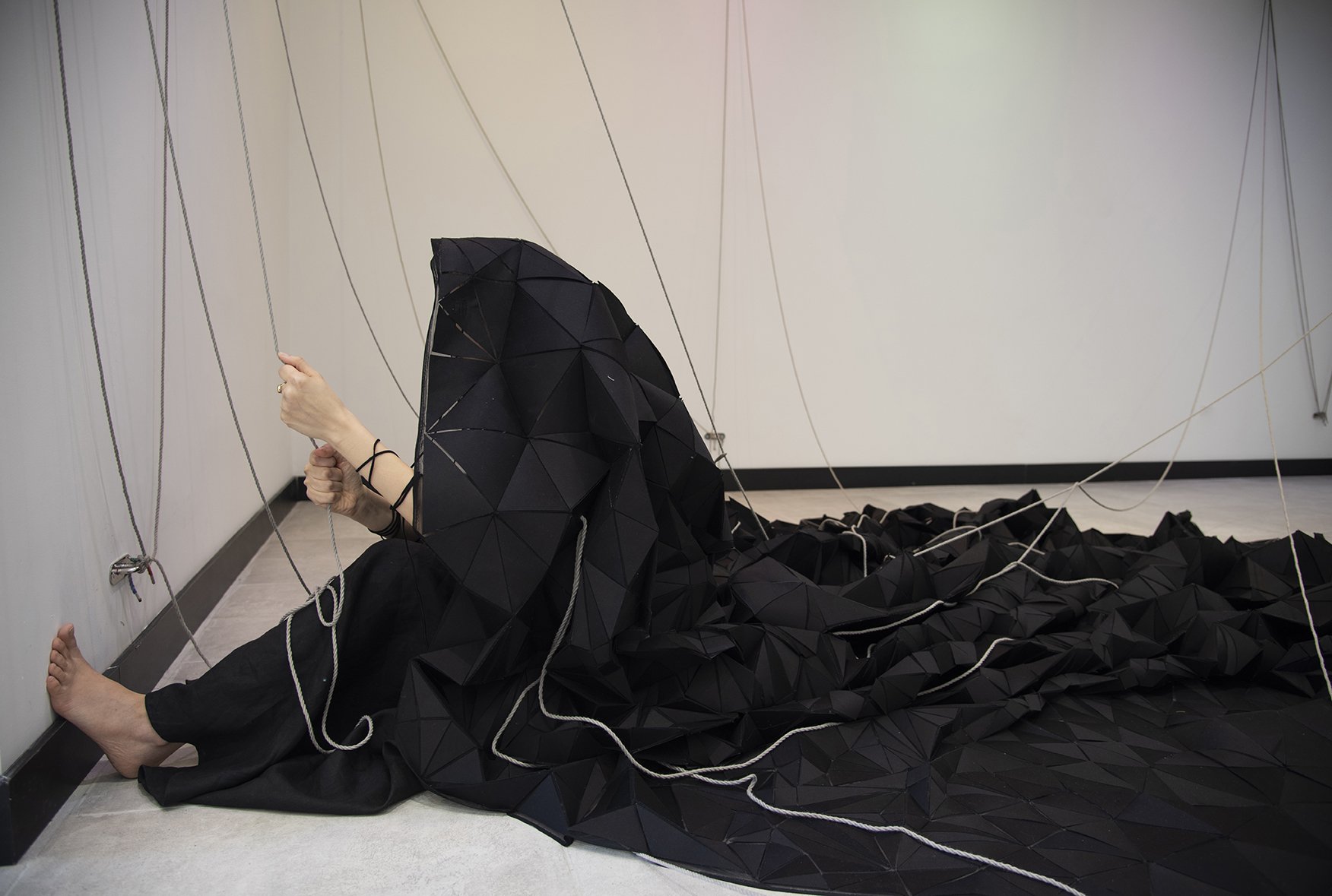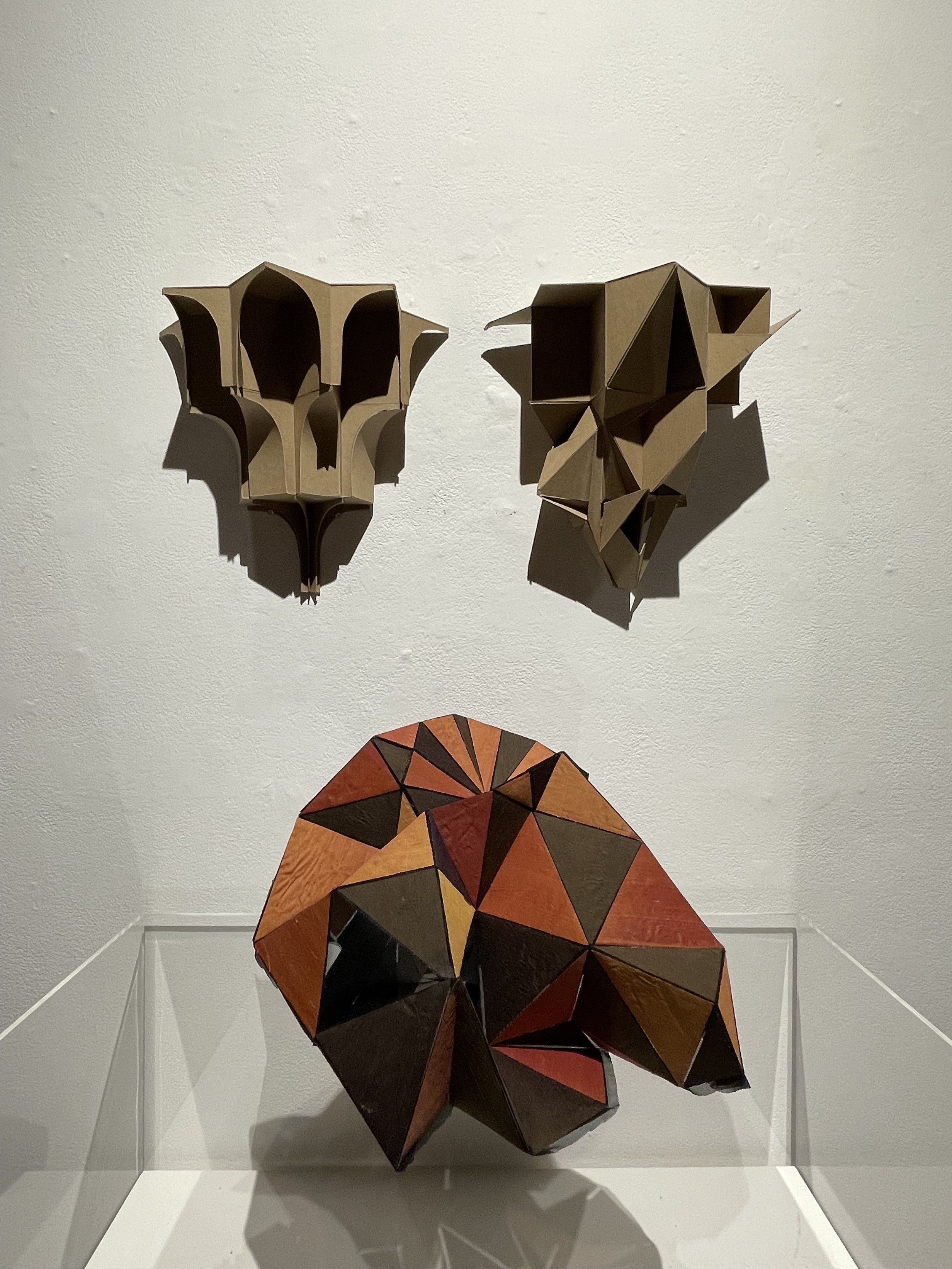Image provided by the artist.
Thirding with a thousand memories
Sara Mozafari (Guest Renter)
JUNE 14 - JUNE 25, 2022
Performance - June 14, 2022 @ 6-7PM
Public Opening - June 16, 2022 @ 5-7PM
Thirding with Nine Thousand Memories is an exhibition, supported by my (Mozafari) thesis paper, that aims to exemplify the correlation of space, memory, displacement, and identity. Through the lenses of immigration, art, and architecture, I revisit my memories to address how, as a woman, I move back and forth between the real space and the mind space to create an imaginary space, reconfiguring my situation in society and developing a sense of belonging.
The exhibition features a performance installation that articulates three different spaces: the Firstspace or real space, the Secondspace or memory-attached unattainable space, and the Thirdspace or imaginary space that emerges from the first and the second spaces through the process of Thirding. Using the moqarnas as a metaphor to represent a memory-attached space that exists in my mind and the siah chador, both in the sense of a veil representing memories and of a tent representing a home or a shelter, I explore how displacement and memory shape identity and social relations, foregrounding my struggle to find a place to call home. The piece applies the moqarnas as a geometrical and spatial allegory for autobiographical and cultural stories and memories. It uses the moqarnas’s facility for conversion and innovation to convey this central idea. It also defines the poetic, metaphoric, and political character of the siah chador in the sense of a black veil and a black tent.
Mozafari completed a performance on Tuesday June 14, 2022 @ 6pm for an group of people in the Red Head Gallery. To watch the performance click here. Below are installation images from the exhibition within the gallery.
BIOGRAPHY
Sara Mozafari was born in the summer of 1981 in Tehran, Iran. 1981 is two years after the Islamic Revolution of Iran. 1981 is a year after the beginning of eight years of war between Iran and Iraq. 1981 is seven years before the mass execution of Iranian political prisoners. She was born in 1981 in Tehran, Iran, as a woman-to-be. And left the country when she was 25. Her experiences of this history—and the imprint those experiences have left on her body—form the basis of her artistic work and research into surveillance, trauma, memory, and belonging in the mental and material spaces we inhabit.
Mozafari did not see the revolution, but its texture is projected on her body, on her mind. She grew up during the war, and her body carries the wreckage of those years. She remembers the mass execution of political prisoners, and her soul holds the feeling of hundreds of bullet holes in remembrance of them. Women’s suppression, though, was the most profound way in which the texture of revolution left its imprint on her body, and the boldest spaces that resonate across the memories are the ones attached to her memories of womanhood. Mozafari's body became an extension of Iran, and it travelled with her over the seas.
After immigrating to Canada, her factual perceptions of her home country narrowed to the memories she has and the news received on an everyday basis. Her current practice’s primary focus is to recognize space, displacement, and memory in diverse aspects of human identity and social relations.







